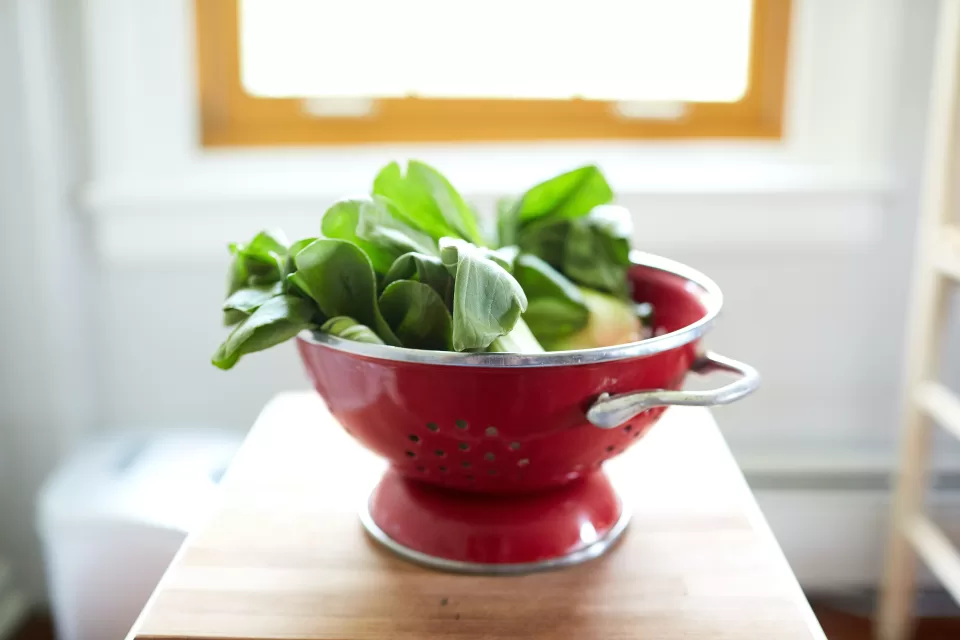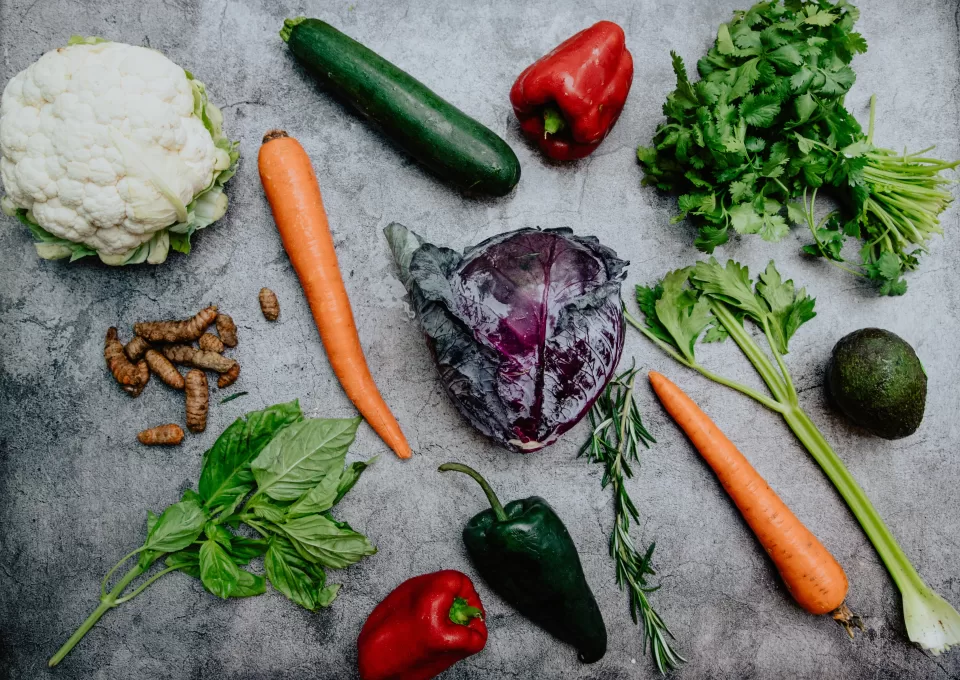Chinese cabbage, also commonly referred to as bok choy, is a versatile, low-cost, and simple-to-cook green vegetable that is incredibly healthy. When stir-fried, bok choy transforms into a delicious side dish or main course full of flavor. Follow this guide to learn the key steps for making the ideal bok choy stir fry in your kitchen.
[sp_wpcarousel id=”40112″]
Select the Best Ingredients
The first step to stir-fry success is choosing high-quality ingredients. Look for heads of bok choy with crisp, bright green leaves and firm white stems. The stems should snap when bent rather than bending or appearing limp. For the ideal tender-crisp texture, select young, smaller heads of bok choy rather than large, mature heads that can have tough stems. Baby bok choy is the most tender variety.
In addition to fresh bok choy, you’ll need aromatics like garlic, ginger, and scallions and sauce ingredients such as sesame oil, rice wine vinegar, and soy sauce. Bell peppers, carrots, mushrooms, and snap peas make excellent vegetable additions. Lean protein like chicken, shrimp, or tofu can turn your stir fry into a main dish.
Prepare the Ingredients
Once you have gathered your ingredients, the next step is proper preparation. Rinse the bok choy under running water, swishing the leaves to dislodge any dirt or debris. Trim off the very bottom of the stem, along with any wilted outer leaves.
For baby bok choy, halve or quarter the heads lengthwise. For larger bok choy, cut the stems away from the leaves and slice them on the diagonal into bite-sized pieces. Stack the leaves and cut them crosswise into strips. Keep the stems and leaves separate, as they will cook at different rates.
Mince the garlic and ginger, slice the scallions on the diagonal, and cut any additional vegetables into evenly sized pieces for even cooking. Mix up the sauce ingredients so they are ready to add.
Use a Very Hot Pan
The intense heat of a wok or large skillet is crucial for getting that signature sear and char on the vegetables. Your pan should be quite hot after being heated on high. Then, quickly add the bok choy stems and other thick vegetables after adding just enough oil to cover the bottom.
Stir-fry for 1-2 minutes until they begin to brown. The vegetables should sizzle when they hit the hot oil. If not, your pan needs to be hotter. Let the vegetables sit between stirs for 10-20 seconds to help them char.
Add the Leaves and Aromatics
Once the stems have softened, add the bok choy leaves and aromatics like garlic, ginger, and scallions. Continue stir-frying for another minute or two. Add your sauce ingredients and toss everything together until the leaves have wilted but are still vibrant green.

Take the pan off the heat when the vegetables reach the desired tenderness. Overcooking will lead to a loss of color and texture. The total cooking time should be 3-5 minutes.
Finish with Sauce and Garnishes
Make a quick sauce for extra flavor by combining broth, soy sauce, vinegar, and sugar. Pour it into the pan and let it reduce until thickened. Finish by sprinkling sesame seeds, chopped herbs, or toasted nuts, and a squeeze of citrus juice like lime or lemon.
Serve Immediately
Bok choy stir fry is best enjoyed immediately after cooking while the vegetables are still hot and crisp. Transfer everything to a serving platter or individual bowls. Serve with steamed rice or protein like seared tofu or chicken. The possibilities for improvising are endless once you master the basics!
How to Select Bok Choy for Stir-Frying
Choosing fresh, high-quality bok choy is essential to creating a tasty stir fry. Follow these tips for selecting the best heads of bok choy:
1. Look for Firm, Unblemished Leaves
The bok choy leaves should be vibrant and free of yellowing or dark spots. Limp, damaged leaves indicate aging produce past its prime. Select heads where the leaves feel crisp and snap easily when bent.
2. Check the Stems
Avoid bok choy with stems that are slimy, pitted, or mushy. Healthy stems should have a smooth, unblemished surface and feel stiff and dense when pressed. Large, mature bok choy will naturally have thicker stems than young heads.
3. Size Matters
Miniature baby bok choy has the most tender leaves and stems, perfect for stir-frying whole. Larger heads will need to be separated and sliced. Medium sizes around 5-8 inches work well too. Giant mature bok choy is best for soups or braising.
4. Trust Your Nose
Fresh bok choy has little discernible scent. Any bitter, fermented, or rotting odor is a red flag. A faint cabbage-like smell is normal but should not be overpowering.
5. Store Properly
Place unwashed bok choy in a perforated plastic bag in the fridge for 3-5 days max. Do not crowd the heads, which speeds up spoilage. Wash right before cooking, not before storing.
Choosing young, crisp bok choy ensures you start with the best raw ingredients to create a top-notch stir fry. Now let’s discuss how to prep bok choy for cooking.
Proper Preparation Methods for Stir-Frying Bok Choy
The right prep steps help bok choy cook quickly and evenly in a hot wok or skillet. Follow these tips:
1. Cut Off the Very Bottom of the Stems
The ends can be fibrous and dirty. Removing them improves texture. For baby bok choy, you can leave stems intact and halve or quarter the head.
2. Rinse Thoroughly
Soak heads in cold water, gently swishing leaves to remove sand or grit. Drain and pat completely dry with towels. The remaining water will hinder browning.
3. Separate the Stems and Leaves
For mature bok choy, cut the leafy greens away from the thick stems. They cook at different rates. Leave small heads intact.
4. Cut the Stems Diagonally
Slice mature bok choy stems on an angle or bias, which breaks tough fibers for tenderness. Cut into uniform 1-2 inch pieces.
5. Stack and Slice Leaves
After separating leaves, stack several together and cut crosswise into 1-2 inch wide strips. Keep pieces similar in size.
6. Keep Stems and Leaves Separate
Place prepped stems and leaves in separate bowls. Stir-fry stems first, then add leaves toward the end of cooking for uniform doneness.
Preparing bok choy correctly allows you to execute quick, high-heat stir-frying, resulting in the ideal texture.
How to Stir-Fry Bok Choy Like a Pro
Once you have your ingredients prepped, it’s time to stir-fry. Follow these expert tips:
1. On High Heat, Warm the Oil in a Skillet or Wok
Use a wok or large non-stick skillet. Heat on high until the oil shimmers before adding any ingredients. This imparts a flavorful sear.

2. Add Stems First
Let stems cook undisturbed for 30 seconds, then stir-fry for 1 minute. They will start to brown. Spread into a single layer to maximize browning.
3. Cook in Batches to Avoid Crowding
If needed, stir-fry stems in two batches for ideal searing. Refrain from overloading the pan, which steams vs. fries.
4. Add Leaves and Aromatics
Next, add leaves, garlic, ginger, and sauce ingredients. Stir-fry for 1-2 minutes until leaves wilt but are still vibrant.
5. Keep Food Moving
Continuously toss and stir ingredients with a spatula or toss with a wok. Frequent stirring prevents burning.
6. Add Sauce and Toss to Coat
Swirl in sauce ingredients like broth, soy sauce, and vinegar. Toss to evenly coat vegetables.
7. Don’t Overcook
Total stir-frying time is just 3-5 minutes. Overcooking destroys texture and color. Err on the less done side.
8. Transfer Immediately
Quickly remove from pan as soon as veggies reach desired tenderness. Bok choy goes from perfect to mushy quickly.
With these fundamental techniques, you can make restaurant-quality bok choy stir fries with smoky wok flavor at home.
Fabulous Vegetable and Protein Add-Ins for Bok Choy Stir Fry
Plain bok choy stir fry is delicious, but adding other vegetables and proteins amplifies nutrition and flavor. Try these mix-ins:
Crisp Vegetables
- Bell peppers
- Snap peas
- Shiitake mushrooms
- Bean sprouts
- Shredded carrots
- Snow peas

Hearty Greens
- Spinach
- Kale
- Chard
- Collard greens
Quick-Cooking Proteins
- Eggs
- Shrimp
- Chicken
- Pork
- Firm tofu
Healthy Fats
- Sesame seeds
- Cashews
- Peanuts
- Pine nuts
- Slivered almonds
Fresh Herbs
- Basil
- Cilantro
- Mint
- Thai basil
- Chives
Flavor Accents
- Green onion
- Shallots
- Chili peppers
- Lemongrass
- Lime zest
Mix and match your favorites based on taste and nutrition to round out your bok choy stir fry into a complete meal.
How to Make a Quick and Easy Sauce for Bok Choy Stir Fry
A flavorful sauce adds a finishing touch to bok choy stir fry. Whip up one of these easy options:
Ginger Sesame Sauce
Whisk together soy sauce, rice vinegar, sesame oil, minced ginger, and sugar—bright, gingery flavor.
Garlic Black Bean Sauce
Mix garlic, fermented black beans, broth, and soy sauce. It has a deep umami flavor.
Spicy Orange Sauce
Combine orange juice, soy sauce, sriracha, and brown sugar. Sweet and spicy.
Peanut Lime Sauce
Whisk peanut butter, lime juice, soy sauce, honey, and water—rich, tangy peanut flavor.
Teriyaki Sauce
Stir soy sauce, mirin, brown sugar, garlic, and cornstarch. Sweet and salty.
Oyster Sauce
Mix oyster sauce, water, sugar, and cornstarch. Savory with subtle saltiness.

For convenience, make extra sauce and refrigerate for up to 1 week. Reheat before using. With a bold sauce, your bok choy will shine.
Master Bok Choy Stir Fry Tonight
By selecting fresh, young bok choy, properly prepping the stems and leaves, stir-frying over intense heat, and tossing with a flavorful sauce, you can create restaurant-caliber bok choy stir fry at home. Adapt the basic formula with different vegetable add-ins and sauces based on your taste and dietary preferences. This classic Chinese ingredient can become a staple of your healthy home cooking lineup with a little practice. Stir bok choy fry a try tonight!
Frequently Asked Questions
What is the best oil for bok choy stir fry?
Good oils for stir-frying bok choy include peanut, vegetable, canola, grapeseed, avocado, or light sesame oil. Avoid olive oil, which can burn at high heat. Look for oils with a high smoke point. A small amount of oil will coat the wok.
Should I blanch the bok choy first before stir-frying?
Blanching is unnecessary when stir-frying tender baby bok choy or smaller heads. For mature bok choy, briefly blanching the stems before stir-frying can ensure even cooking. Stems should be rinsed in hot water for a minute before being shocked in an ice bath to stop the cooking process.
How do I prevent the bok choy from getting mushy?
Avoid overcrowding the pan that steams the veggies. Stir-fry in batches if needed. Also, take bok choy off heat when stems are crisp-tender before leaves overcook. Properly prepping stems and leaves helps, too.
What’s the difference between baby bok choy and regular bok choy?
Baby bok choy has small, tender stems and leaves. It can be stir-fried whole in just a minute or two. Regular bok choy has crisp white stems and dark leaves but is more mature and larger, needing to be separated and sliced before cooking.
Can I freeze leftover bok choy stir fry?
It’s best to enjoy bok choy stir fry immediately after cooking. The texture won’t hold up well to freezing. To freeze, blanch bok choy first. Cool completely, then transfer to freezer bags. Thaw before using and add to soups, fried rice, or egg dishes.

